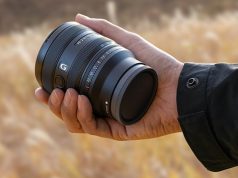Okay, so smartphone photography is getting pretty legit. (I wanted to just toss that nugget out there for those of you who have been living in a cave.) Consider a few of the items in this category that have made headlines in the past few months: 20MP becoming standard resolution fodder, 4K video, larger sensors, RAW capability, HDR capture for stills/videos, DSLR-style shutter priority, and many other amazing imaging goodies that smartphones now offer.
Still, the purists among us will argue that for their more “serious” picture-taking needs, they’re not about to let go of their traditional digital camera—be it a trusted compact, a superzoom or the latest mirrorless ILC or DSLR.
However, a fairly new technology that initially appeared in traditional digital cameras, dubbed sensor shifting, which allows for what is loosely being termed “super res mode,” may soon show up in smartphones. Apple is allegedly leading the way for this innovation with its integration in an upcoming iPhone release.
Olympus was the first traditional camera manufacturer we know of to showcase this sensor-shifting innovation in their recently released Micro Four Thirds OM-D E-M5 Mark II. It boasts the ability to shoot massive 40MP images off of its 16MP sensor.
The pixel-shift tech works using a special mode that captures eight images in sequence over one second at 16MP each, moving the sensor by half-a-pixel between each shot. These images are then combined in-camera over two seconds to create a super-high-res photo that supposedly rivals those captured by actual 40 megapixel, full-frame sensors. The sample images we’ve eyed are stunning.
The hot new smartphoneography rumor of late is that Apple is working on a patent they are calling “Super-Resolution Based on Optical Image Stabilization” that appears to be a variation on the Olympus pixel-shifting technique for smartphones.
Apple’s recent patent application for the tech follows a very similar structure:
“A system and method for creating a super-resolution image using an image capturing device. In one embodiment, an electronic image sensor captures a reference optical sample through an optical path. Thereafter, an optical image stabilization (OIS) processor adjusts the optical path to the electronic image sensor by a known amount. A second optical sample is then captured along the adjusted optical path, such that the second optical sample is offset from the first optical sample by no more than a sub-pixel offset. The OIS processor may reiterate this process to capture a plurality of optical samples at a plurality of offsets. The optical samples may be combined to create a super-resolution image.”
The only negative aspect to this tech that we’ve heard about thus far is that it doesn’t work well with motion—and that any camera using it must be completely still (i.e., used on a tripod). We are told that Olympus is working on a way to allow the feature to work as well with handheld shooting. We can only assume that Apple is dealing with this issue in their patent as well.
We’ll be digging around a bit more on this one and circle back. We’re also trying to find out a bit more about Toshiba’s rumored Lytro-like, after-the-fact focusing feature for smartphones—as the battle for which camera consumers will be grabbing when they head out the door heats up.
There’s lots going on, and you just have to wonder if there will soon be a day when we ask if there isn’t anything a smartphone can’t do that a digital camera can. Food for thought, especially for those of us making a living in this space.





